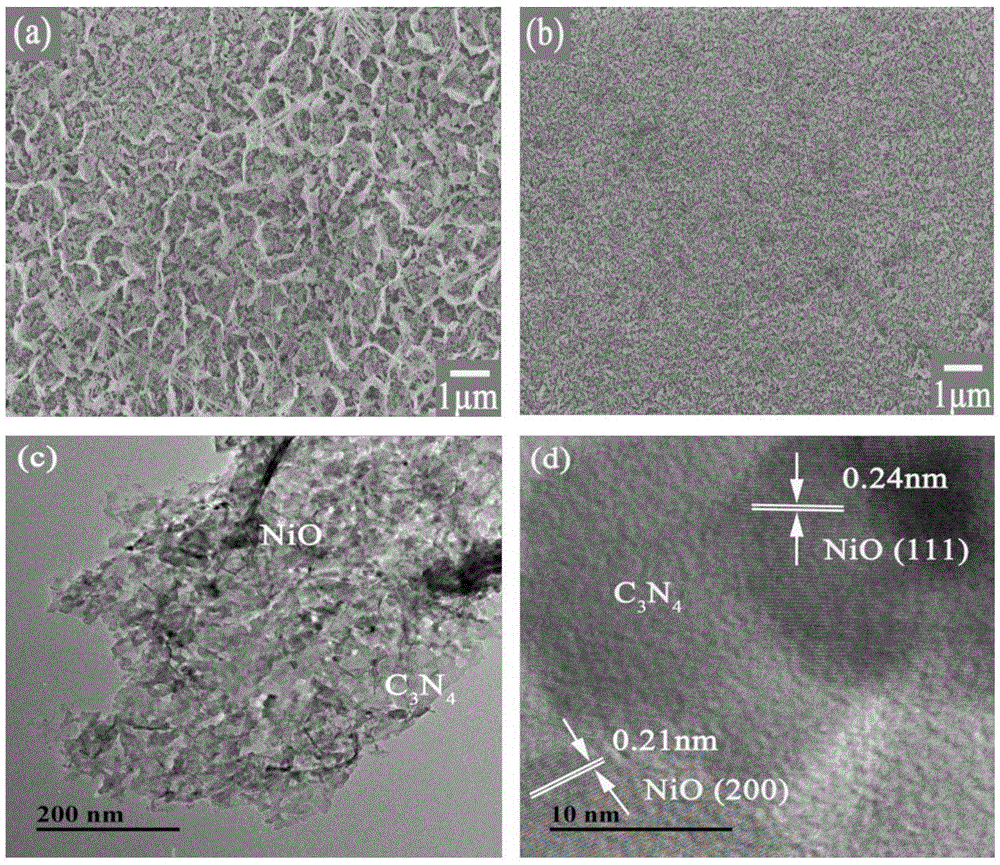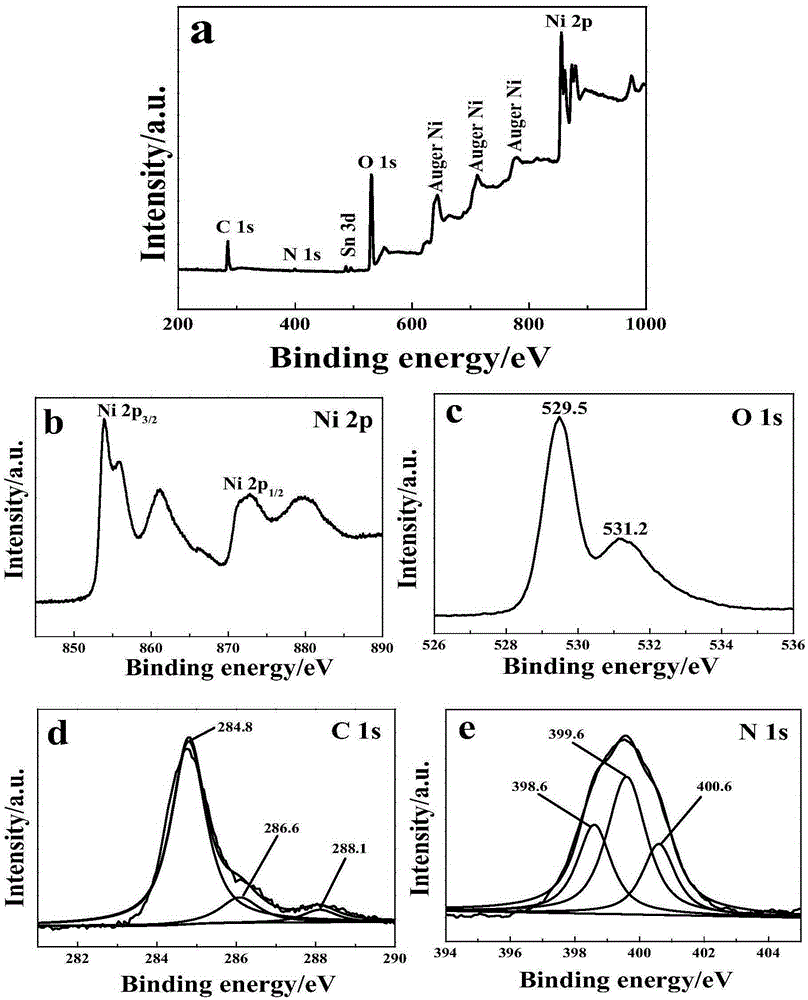Novel and stable g-C3N4/NiO photoelectric cathode preparation method
A photocathode, g-c3n4 technology, applied in the direction of photovoltaic power generation, photosensitive equipment, electrolytic capacitor manufacturing, etc., to achieve the effect of simple and easy preparation method, high practical value and application prospect, and efficient reaction
- Summary
- Abstract
- Description
- Claims
- Application Information
AI Technical Summary
Problems solved by technology
Method used
Image
Examples
Embodiment 1
[0031] a g-C 3 N 4 / NiO / FTO photocathode preparation method, its specific steps are:
[0032] (1) Surface pretreatment of FTO conductive glass
[0033] Soak the FTO conductive glass in absolute ethanol and acetone for two hours, and then heat and reflux in 2mol / L potassium hydroxide isopropanol solution for 30min;
[0034] (2) Preparation of NiO / FTO electrode by hydrothermal method
[0035] Put the FTO glass into 0.25mol / LNi(NO 3 ) 2 ·6H 2 In a mixed aqueous solution of O and 0.25mol / L hexamethylenetetramine, heat at 100°C for 12min, take it out, wash it with deionized water, dry it in the air, and place it in a muffle furnace for calcination at 450°C for 2h to obtain NiO / FTO electrode;
[0036] (3) Prepare g-C by thermal polymerization 3 N 4 Sensitized NiO composite electrode
[0037] Immerse the NiO / FTO electrode prepared above into a saturated thiourea solution for 4 hours, take it out and dry it in the air, and then place the NiO / FTO electrode adsorbed on thioure...
Embodiment 2
[0040] Examined g-C 3 N 4 / NiO / FTO photocathode photoelectrochemical performance, and under the same conditions with only a single component of g-C 3 N 4 / FTO, NiO / FTO electrodes were compared.
[0041] image 3 (a) is g-C prepared in embodiment 1 3 N 4 / NiO / FTO electrode UV-vis absorption spectrum, as can be seen from the figure, g-C 3 N 4 Its absorption edge is around 440nm, and its forbidden band width can be calculated by the Tork curve in the illustration, and the intersection point of the extension line of the linear part of the corresponding Tork curve and the abscissa is g-C 3 N 4 The forbidden band width value. In addition, it can also be seen from the figure that the absorption of NiO alone in the visible range is very weak, while g-C 3 N 4 The / NiO composite electrode shows a strong absorption capacity in the range of 350-460nm. It can be seen from the above results that: g-C 3 N 4 The absorption peak of the / NiO composite electrode is shifted to a lon...
Embodiment 3
[0044] The photoelectrochemical stability of an electrode is crucial to a photoelectric hydrogen production system. Therefore, we investigated the prepared electrode g-C 3 N 4 / NiO / FTO long-term stability.
[0045] With 0.10mol / LNa 2 SO 4 As the electrolyte solution, the Ag / AgCl electrode was used as the reference electrode, and the platinum mesh was used as the counter electrode. The prepared g-C 3 N 4 / NiO / FTO electrode as the working electrode, the electrolyte solution was filled with CH 4 / N 2 The mixed gas is degassed to remove the O 2 , and then measured its electrochemical stability with a CHI600E electrochemical instrument.
[0046] Figure 4 (a) and (b) represent g-C respectively 3 N 4 / NiO / FTO electrode using CH 4 / N 2 A plot of current versus time in saturated versus air-saturated electrolyte solutions. It can be seen from the figure that the current of our electrode can maintain long-term stability (10h) under these two conditions. It is worth noting ...
PUM
 Login to View More
Login to View More Abstract
Description
Claims
Application Information
 Login to View More
Login to View More - R&D
- Intellectual Property
- Life Sciences
- Materials
- Tech Scout
- Unparalleled Data Quality
- Higher Quality Content
- 60% Fewer Hallucinations
Browse by: Latest US Patents, China's latest patents, Technical Efficacy Thesaurus, Application Domain, Technology Topic, Popular Technical Reports.
© 2025 PatSnap. All rights reserved.Legal|Privacy policy|Modern Slavery Act Transparency Statement|Sitemap|About US| Contact US: help@patsnap.com



